(click on photos to enlarge)
MURANO GLASS
modern and ancient Venice Murano Glass
The origin of the great Italian centre of
glass-making at Venice cannot be traced with centainty
much farther back than the tenth century. There remains,
hawever, the possibility that the industry was carried
on before this date on a small scale, especially for the
nanufacture of tesserae for glass mosaics
inspired by those of Byzantine Ravenna.
In 1291 the Venetian Senate decreed that, because of the
increasing risk of fire from the number of furnaces
operating, the industry be removed from the Rialto to
the Island of Murano.
The concentration of the industry on the Island of
Murano ledto monopoly under the aegis of the Republic of
Venice. To maintain the monopoly and the manufacturing
secrets severe penalties were enjoined for absconding
workmen.
Despite this, some glass-makers went to France, England,
Spain, Germany and the Netherlands, and it is often
difficult to decide where a particular specimen was
made, so clesely do they resemble each other in style.
|
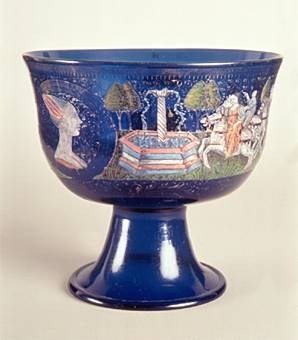 |
| |
The Barovier cup, 1470/1480
|
Enamelled goblets remained fashionable until the end of the
first quarter of the 16th century. After 1500 enamelled glass
tend to be more simply decorated, principally with shields of
arms and motifs of the period.
Enamelling was abandoned and decorating glass by engraving with
a diamond began about 1560. There was also a marked tendency
toward discolouration obtaining the glass called 'cristallo' for
its resemblance to the much-valued hardstone rock-crystal.

|

|

|

|
flask, mid 16th century
|
'cesendello' Tiepolo, end of 15th century
|
drinking glass, 16th century
|
drinking glass, 16th century
|
The development of an opaque but translucent white glass was
inevitable obtaining a glass resembling to Chinese porcelain.
The use of trailed threads of glass developed into a mode of
decoration in which canes were used to form complex interlacing
patterns, the finer of which were called 'vitro di trina' (for
there resemblance to lacework) but 'latticino' being the more
general term.
Especially during the 17th century mirros formed a large part of
Venetian Murano production (they had been made since the early
years of the 16th century).

|

|

|

|
spiral bowl, 1895
|
painted glass bottle
|
crystal drinking glass
|
drinking goblet, 17th century
|
But the opening of the sea-routes to the Far East by way of the
Cape greatly reduced the importance of Venice as a centre of
Oriental trade on which its prosperity had been largely based
and the glass-making declined as most other Venetian industries.
The 18th century saw the adoption of novelty for its own sake,
and of attempts to follow fashion instead of to lead it. But the
decline was inevitable and Murano glass production at the
beginning of 19th century was higly compromised.
It was not until the 1830s that there were signs of of new life
in the blown glass sector. Antonio Sanquirico, a Venetian
antiquarian, persuaded several master glassmakers to reproduce
old filigree glass objects he owned. So splendid were the
results that they were sold as antiques, and from then on his
name was linked to the 'retortoli' glass hence known as
'zanfirico'
A sector of Murano glass not suffering the 19th century crisis
was beadmaking that, with the name of 'conterie' covers all the
enamel cakes and varietis of beads widely known as 'Venice
beads'.
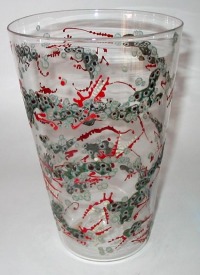
|
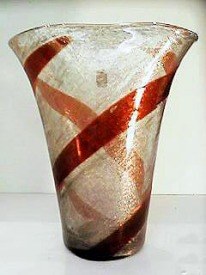
|
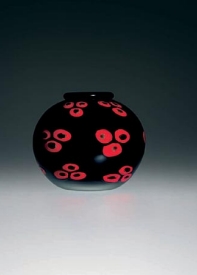
|
Anzolo Fuga
|
Dino Martens for Aureliano Toso, 1954
|
Ercole Barovier, Murrine, 1927
|
Around 1860 only furnaces of bead were funcioning on Murano,
while the mosaic industry was developing and blown-glass work
was fully abandone.
Only in 1861 the master glassmakers Toso, Fuga and Baroveier
from the F.lli Toso glasswork succeeded in reproducing ancient
ornamental blown glass rediscovering the attributes by which
their ancestors had created magnificent objects over the
centuries.
With the rebirth of the art of glassmaking on Murano, in 1866
Antonio Salviati founded Salviati e Co., the first glasswork in
centuries to be devoted exclusively to artistic glass.
In the 1870s Vincenzo Moretti, the technical expert of the
Compagnia di Venezia e di Murano solved the problem of
reproducing the ancient Roman glass murrhines preparing glass
for murrhines and cameo receptacles and working on rare glass as
chalcedony, aventurine, ruby glass and enamels for mosaics.
But the end of the 19th century saw many other leading master
glassmakers as Giuseppe Barovier, Isidoro Seguso, Angelo Seguso,
Giovanni and Giuseppe Barovier, Angelo Fuga.

|

|

|
Fulvio Bianconi for Seguso, 1978
|
Cappellin MVM, 1930
|
Seguso, Geode
|
In the 20th century the galss art flourished in Murano and many
important firms firms, master glassmakers and designers offered
their contribute to the diffusion of Murano glass throughout the
world.
Their names were Vittorio Zecchin, Giovanni Seguso, Carlo
Scarpa, Paolo Venini, Napoleone Martinuzzi, Francesco Zecchin,
Ercole and Nicol˛ Barovier, Flavio Poli, Otello Nason, Otello
Nason, Francesco Martinuzzi, Ulderico Moretti, Angelo Seguso,
Archimede Seguso, F.lli Toso, Pauly & C., Venini e C., Barovier
Seguso e Ferro, MVM Cappellin e C., SocietÓ Veneziana Conterie,
Barovier Seguso e C., Flavio Poli, Alfredo Barbini, Aureliano
Toso, AVEM, Giuseppe Toso, Angelo Vittorio Mazzega, Gino
Cenedese, Ercole Barovier, SALIR, Ettore Sottsass, Gio Ponti,
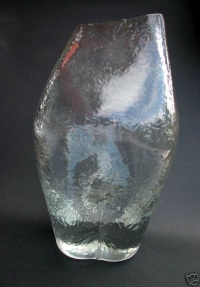
|
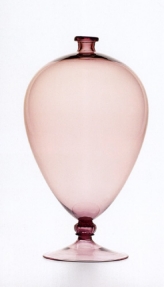
|
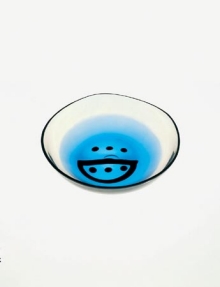
|
Fulvio Bianconi for Venini, 1968
|
Vittorio Zecchin, VSM Cappellin e C,. 1921/1925
|
Carlo Scarpa for Venini e C., 1942
|
Bianconi e Venini, Giuseppe Santomaso, Riccardo Licata, Ferro
Lazzarini, Paolo Venini, Nason e Moretti, Livio Seguso, Pino
Signoretto, Ermanno Nason, Luciano Vistosi.
They produced outstanding pieces of 'pulegoso' glass, 'stained'
glass, 'lattimo' glass, 'sommerso' glass (submerged
glass),'murrina' glass, 'zanfirico' glass, 'graffito' glass, and
much other more.
|
|



















